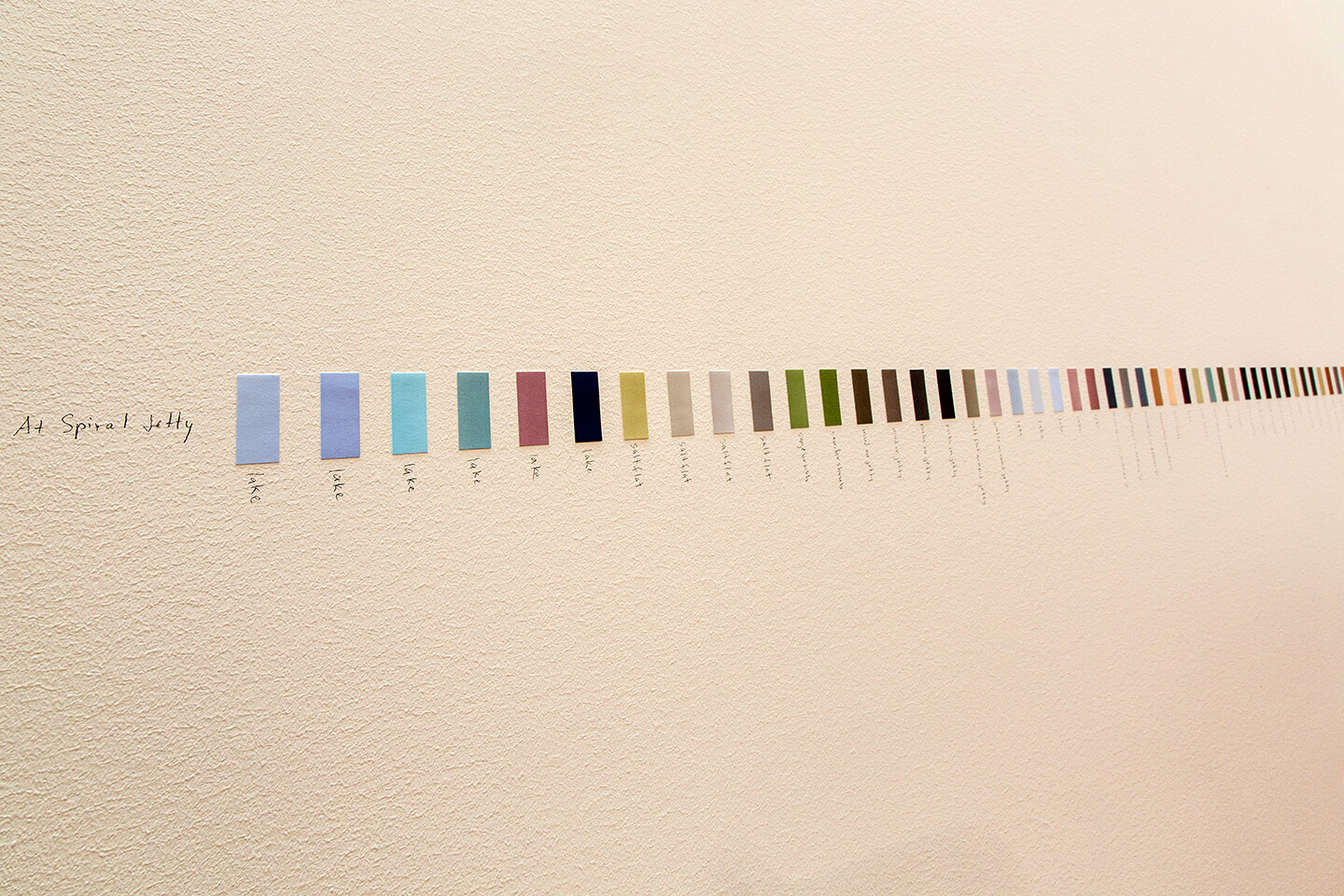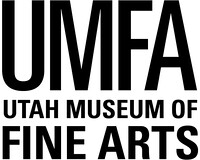Great Salt Lake and Vicinity
August 26, 2017
Marcia and John Price Museum Building
410 Campus Center Drive
Salt Lake City, Utah 84112-0350
United States
Hours: Tuesday–Saturday 10am–5pm,
Wednesday 10am–9pm
T +1 801 581 7328
F +1 801 585 5198
Spencer Finch’s new site-specific installation at the Utah Museum of Fine Arts (UMFA) brings the remote landscape of Great Salt Lake into the Museum’s cavernous Great Hall. By using standardized Pantone color chips and language, Finch engages the memory and imagination of each viewer in the recreation of a journey. Over three days, Finch circumnavigated the super-saline body of water via foot, boat, and car, recording the colors he saw along the way. On the final evening of his expedition, he met with UMFA senior curator and curator of modern and contemporary art Whitney Tassie to discuss his work, this project, and his experience in Utah. The following is an excerpt from that conversation.
Whitney Tassie (WT): Your piece functions, and can be experienced, at multiple scales.
Spencer Finch (SF): Right. It’s abstract from a distance but becomes representational when you get close. And it also has a narrative as you move around it. I like the idea of the shape of the artwork referring to circumnavigating the lake, but of course, it’s not like you could walk around it and see it in that sort of complete way because the lake is not always accessible. It’s a matter of going around it and seeing the nearby environment, and dipping in and dipping out, so it’s more complex, and also more rich, and also a little more complicated than I imagined, but I went around the whole thing. And I saw it from many, many different vantage points.
WT: It’s otherworldly, isn’t it?
SF: It is otherworldly. It’s like some sort of ocean from Venus. Very odd, you know, with all the salt, all the different colors… And when you go out on the causeway, you can see that. You can see the division of the colors. The south side is blue, and the north side is reddish purple.
WT: People will be surprised to see the variety of color.
SF: The more I learned about the lake, the more I realized that a lot of people who live right near the lake never go to the lake. No one’s interested in it. They think it’s polluted; they think it’s smelly; they think there are lots of flies; they think it’s ugly; it’s not a natural wonder. But it’s pretty spectacular… There is a huge variety of color around the lake and its environment. Color is a fun way to think about a trip. There are plants; there are animals; there are insects; there are birds. There’s a lot of color, and there’s a lot of water. The more I saw the lake, the more I wanted to really have a lot of different views of the lake, and to see the variety of color. It’s just a huge range. It depends on the angle that you’re viewing it from; it depends on the part of the lake; it depends on where the sun is; it depends on the weather; it depends on the light; it depends on all sorts of things, so there’s a lot of variety, which is great.
WT: Tell me about your experience at Spiral Jetty. Had you been there before?
SF: No, I’d never been there. At first, I was underwhelmed by it. It sort of felt smaller and lower than I thought. And then, walking out on it, I thought it was really great, and it felt more modest, and then I thought that was kind of great, you know? It was made almost 50 years ago, and it has this kind of modesty, like an artist just got a guy with a dump truck, more or less. Not at all like something with a Jeff Koons’ production value. But just someone who’s really determined to make something interesting.



